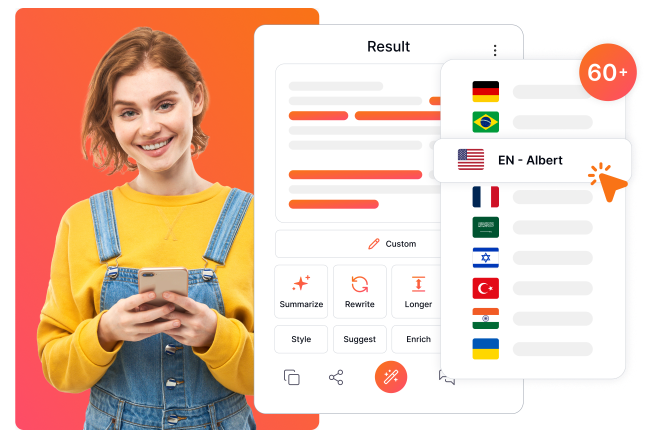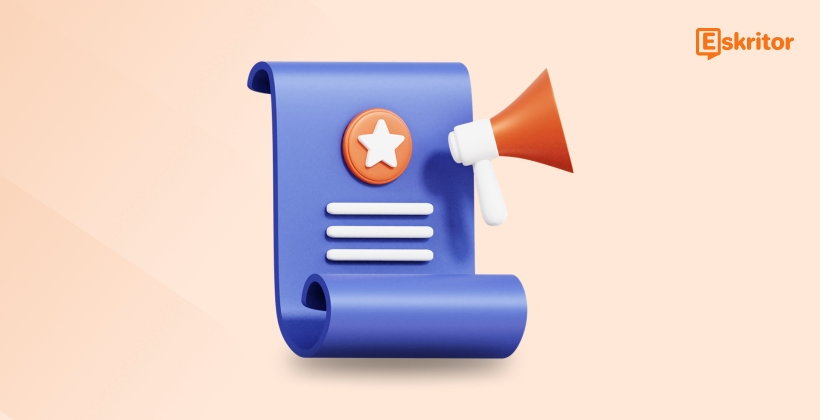The Role of AI in Modern Editing Practices
The Role of AI in Modern Editing Practices
Blog Article
Effortless Precision with AI Editing Solutions
Artificial intelligence (AI) publishing technology has developed rapidly within the last decade, reshaping the way we build and talk with written content. From syntax modification methods to AI-generated books, the possibilities appear limitless. But where just is that technology going? Let's investigate the inventions, difficulties, and potential potential of AI writer.

How AI Publishing Engineering Works Nowadays
At its key, AI publishing technology relies on Normal Language Running (NLP) and machine learning. These systems allow types to understand, generate, and increase individual language. Resources accessible today do well at jobs like:
1. Material Generation
AI has reached a place wherever it may generate total website threads, social media marketing sayings, and even media articles. Some types are capable of mimicking human publishing styles therefore effortlessly that distinguishing between AI- and human-written content has become significantly difficult.
2. Grammar and Design Idea
AI-powered publishing personnel don't only check always for grammar and spelling problems; they also give ideas to improve tone, understanding, and syntax, creating complex writing available to a wide audience.
3. Emotion Examination
AI may consider the emotional tone of a piece, allowing corporations to assess how their communications may resonate with readers. That is specially of use in advertising and client interaction.
The Current Trends in AI Publishing Technology
Many trends are surrounding the next stage of AI-powered publishing instruments:
• Personalization
AI publishing engineering is increasingly capable of tailoring content to specific preferences. Models can adapt to a user's writing model, ensuring the productivity feels authentic.
• Multilingual Features
Several AI resources are increasing their worldwide achieve by offering increased translation features and help for numerous languages.
• Increased Study Features
AI instruments today possess the capacity to analyze large levels of knowledge and provide fact-checked, well-researched publishing in seconds, simplifying the method for experts in industries like law, money, and journalism.
What the Future Holds for AI Writing Engineering
1. Improved Creativity
While current AI is good at generating content, their creativity remains limited to designs within its education data. Future AI isn't just expected to help but to generate unique, insightful works that problem individual imagination.
2. Seamless Effort
Envision an AI that performs along with you in real-time, performing your sentences, performing live edits, and even brainstorming ideas. AI writing tools might shortly become co-authors, allowing creativity to movement uninterrupted.
3. Moral and Accessible Design
With growing matter about plagiarism, misinformation, and tendency, developers are working toward more clear AI teaching functions and moral implementation. Potential tools will probably present more comprehensive citations and measures to ensure accountability.
Problems and Criteria
The progress of AI publishing technology isn't without hurdles, including:
• Honest Issues

Who owns material created by AI? How do we assure AI-generated content is not distributing misinformation? These debates remain unresolved.
• Human-AI Balance
May AI complement individual creativity or entirely replace certain functions? Many authors and musicians be worried about their relevance in a AI-driven world.
• Supply Separate
Not totally all businesses or parts have identical access to cutting-edge AI instruments, raising questions concerning the affect of this technology on global inequality.
Changing the Way We Create
AI writing technology remains in their infancy compared to their potential. Whether you are a student crafting documents, a material marketer targeting certain readers, or perhaps a novelist seeking motivation, AI tools can continue steadily to revolutionize the writing process. Another decade promises breakthroughs that combination individual ingenuity with unit intelligence, developing a potential where publishing is more effective, available, and impactful than ever before.
Report this page